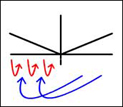A Summary of the History of the World, in Videos
THE EGYPTIAN ERA
by Edward Ulrich, updated February 18, 2022
The videos on this page details aspects of Egyptian History. It is a part of the article “A Summary of the History of the World, in Videos.”
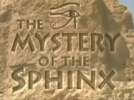
This interesting documentary explains the controversial but convincing view that the ancient Sphinx in Egypt is much older than it is officially considered to be, far predating the rest of the known Egyptian society or even any other previous known civilization. Evidence shows it being built when the Sahara desert had a rainy climate as long ago as 15,000 BC due to the fact that much of the erosion on the Sphinx and its temple have been caused by rain instead of by wind, contrary to the erosion on other structures in the area that were supposedly built at the same time; and the face of the Sphinx does not at all match the face of Pharaoh Kafre as is claimed. Also explained is the theory that the Sphinx was initially much larger and it looked like a real lion, with it eventually being carved down to today’s shape to give it a new face due to the old one being lost to erosion. The documentary is hosted by Charleton Heston.

In this video Stephan Milo attempts to debunk the claim of Robert Schoch saying that the Sphinx is actually much older than commonly thought.

This documentary explains how a stone tablet was found in 1799 that contains an identical message written in Ancient Greek, Demotic script, and Egyptian hieroglyphics, which has allowed researchers to rediscover the ancient Egyptians languages that were previously lost to the ages.

Episode 1: This episode explains how Egypt was initially united by the mysterious King Narmer who laid the foundations for the continuing rule of the Pharaohs over the next 3000 years.

Episode 2: This episode explains how in the second millennia BC foreign tribes began to infiltrate and threaten Egypt from the north.

Episode 3: This episode explains how priests steadily gained power in Egypt until 1350 BC when King Akhenaten came to the throne.

Episode 4: This episode explains the funerary practices of the Egyptians, including the techniques they used for mummification, the elaborate tomb palaces they built for the kings where the king’s courtiers also needed to die and be buried along with the king, it mentions that the laggy pyramids were tombs. [Note: although that is debated], the numerous burial labyrinths at the Valley of the Kings which had unfortunately all been looted except for the tomb of King Tut, and how King Ramses fought with the Hittites and eventually made peace with them, and the discovery of the tombs of as many as 45 of the sons of Ramses.

Stephan Milo explains the technologies that the Egyptians might have used to build the Great Pyramid of Giza.

This video by Chirs Hasler on the Study of Antiquity and the Middle Ages channel explains the origins of the people who lived in pre-dynastic Neolithic Egypt.

This episode examines evidence of the ancient origins of the Egypt civilization.
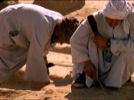
This episode explains the spiritual significance of various types of Egyptian structures.
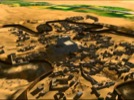
This episode explains issues with wars between the local Egyptian Princes and the Hyksos Kings, how gold from previous tombs of pharaohs may have been robbed to finance burials of future kings, and many other issues are explained as well.
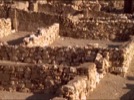
This episode explains the spiritual beliefs of the Egyptian culture.

This episode talks about a variety of issues with mummies in Egypt, including the fact that in the 1800’s Western explorers would bring mummies home with them as souvenirs and display them, and Western entrepreneurs in the 1800’s are claimed to have imported thousands of mummies to be “recycled” by being turned into firewood and products such as paper to wrap meat.
This documentary depicts a time period in Egypt starting in 1560 BC, 1000 years after the large pyramids where built, which is known as the rise of the “Golden Age” New Kingdom where there was an explosion of wealth, creativity and power due to expansion and consolidation of the surrounding areas. It is a 2001 PBS “Empires” series, narrated by Keith David.






This four episode 1997 A&E History series details four different time periods in ancient Egyptian history, ranging from 3150 BC to 30 BC.





“Episode 1: Follows the birth of Egyptian civilization and the origins of the pharaohs and their legacy of the pyramids. It begins with the story of how the first pharaoh, the warrior Narmer, united Upper and Lower Egypt and began the first dynasty. Covers Narmer, Hor-Aha, Sneferu, and Khafre.”

“Episode 2: By 2180 BCE, almost 1,000 years after the first pharaoh, the Egyptians had made advances in science, art, and technology and had built what was arguably the most advanced culture at that time in civilized history. However, the Old Kingdom started to decay when a child became Pharaoh.”

“Episode 3: By 1353 BCE, Egypt was again stable, with much of the prosperity of the Old Kingdom. However, the ascension of Akhenaten brought a new crisis. Akhenaten was branded a heretic by history because of his attempts to transform Egypt's religion, but he was also considered remarkable by the way he shared power with Nefertiti. Covers Amenhotep IV (Akhenaten), Tutankhamun, Ay, and Seti I.”

“Episode 4: Considered by historians to be the greatest era of the New Kingdom began in 1279 BCE, when Ramses II assumed the throne. Ramses II is remembered by history as Ramses the Great. The Great Pharaohs of Egypt series concludes with an in-depth look at his 67-year reign. He led foreign conquests and embarked on what is considered the most ambitious building program since the Great Pyramids, restoring old monuments and erecting countless new ones. The program concludes with the life and death of Cleopatra as the last pharaoh. Covers Ramses II, Ramses III, and Cleopatra VII.”

This 2015 documentary explains the mysterious ancient city of Petra that was carved by the Nabateans into red-rock cliffs of the Jordanian Mountains starting in 500 BC. The carvings consist of massive elaborate city structures such as crypts, shrines, and canal systems, all of which were designed in an odd combination of architectural styles from all over the Mediterranean including in the Greek and Roman Styles. Petra became a major trading center which Rome took control of in the second century, and by the 7th century the city had been abandoned due to a cataclysmic earthquake, with the city’s ruins becoming a hidden secret of the mountains.
<< previous section | next section >>
Article Tree
| A Summary of the History of the World, in Videos |
| THE EGYPTIAN ERA |







